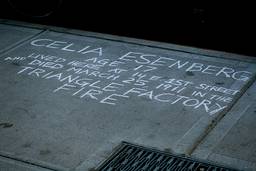
Many of us on this blog have been thinking a great deal about the future of labor in the U.S. We have explored the continued abuse of workers and have tried to find and highlight effective organizational strategies that have helped them.
The landscape is not a bright one. Unionization rates are at an all time low for the modern era. Labor law reform seems lost in the “hope” of the last presidential campaign. And unions seem more interested in fighting amongst themselves for scraps than in advancing the cause of workers. In this depressing fog, I have been watching with curiosity a new organization, the Freelancers Union (FU).
Like many, I wasn’t sure what to make of this organization. Not sure even about its name. But it has continued to grow; in the New York City area it has almost 100,000 members, making it one of the largest unions in the city. Its leader, Sara Horowitz, has become a go-to person on the new economy and workforce issues appearing on what seems like every TV and radio show and in countless newspapers.
At first, like many, I was amused. I mean, was this even a “union,” and was Horowitz really a labor leader? So I decided to sit down and talk with Horowitz about her organization, the growth of freelancing and the trend’s larger economic ramifications.
We meet at FU’s Brooklyn headquarters, in DUMBO. The first thing you notice about the organization is, it feels less like a labor organization and more like an entrepreurial start-up. It has an open office and a loose feel to it. There’s a big bullpen with desks and monitors. The staff dresses casually and their average age seemed under 30.
The vibe seemed more like a political campaign than an organization representing workers. And I guess that makes sense. The FU, if it is anything, is an advocate for freelancers. It is a new phenomenon, part entrepreurial and part old-fashioned organization.
When I walked into Horowitz’s office, I noticed this was not the ceremonial office of a labor leader. This was a command center, with piles of paper, books and a computer on a cart. This was an office designed for functionality, not political statements of ego.
One item stands out, however, and that is a small, but centrally placed, photo of Sidney Hillman, the president of the Amalgamated Clothing Workers and founder of the Congress of Industrial Organizations (the CIO, which later merged with the AFL). That seemed to be the one overt act of the entire office. Hillman watches over Horowitz while she works.
At one point in the interview, Horowitz stopped and pointed to the picture. For her, Hillman is “the model.” As she said, “he built something,” creating a social movement, not just a labor organization, and changed America for the better. And he provided benefits to his members, health centers and a bank — a whole new world.
Like Hillman, Horowitz seems on a mission. She is less interested in thinking about how her organization fits into the structures of contemporary labor unions, and bristled at such questions. But her understanding of the Wobblies and Knights of Labor groups, which she said had profound effects on her thinking, would give a graduate student in labor history a run for her money. In Horowitz’s writings and speeches one can hear faint echoes of this past, coupled with deeply sophisticated social scientific analysis.
In 1995, Horowitz founded the group that would eventually birth the Freelancers Union. Since that time, she has been working on behalf of contract “professional” workers, who make up an increasing proportion of the work force. By the FU’s own estimates, freelancers make up 30% of the U.S. economy. That number includes what I guess I would call nonprofessional workers.
But the FU, you see, only seeks to represent professional freelance workers.
Can an organization of creative types, who roam from gig to gig, form a durable organization and can this group join with organized labor to promote social justice? I am not sure. Right now, other unions look suspiciously at the FU. It’s young, it’s brash and its members have no tradition of supporting workers’ rights. I suspect that most of its members are liberal if not radical, but would this transcend the intellectual and manifest itself on the streets? Again, I am not sure.
But if you listen carefully to Sara Horowitz, you realize she is thinking seriously about this and trying to move her members. Right now the FU provides a means for freelancers to buy health insurance and plan for retirement. They hold webinars on issues affecting their members. They also have lobbied hard to change tax laws that affect freelancers negatively and have worked with the mayor, who wants to make the city more hospitable to entrepreneurs and creative types.
As a labor historian, it’s hard for me to fully gauge the FU. It is, as she said in a recent interview, “a work in progress…not a done deal.” Traditionally, unions have been organized on job sites, at the factory gates. The FU can’t do that, as its members are everywhere. They are also members of other unions (musicians, writers, etc.). So what seems to hold the FU together are two things: advocacy for freelancers and the collective benefits they can offer, such as health and retirement benefits. They are what Horowitz says “a union in our own way.”
But FU members are and aren’t like other union members. They are usually highly educated and come from what we might consider middle-class backgrounds. But, economically, as Horowitz states, “if [working] class is defined as low wage, our members are low wage.”
If we are entering a new economic period, one where increasingly larger numbers of Americans will be freelance or contingent, what will be the effect, to be blunt, on the class consciousness of this new group? Will they see themselves as deluded self-employed business people or exploited workers?
Right now they see themselves as both. And that is where the FU lives. Will the FU convince its members that they are workers with commonalities to other workers? Or will it reinforce the class divide? Only time will tell. But, how this question is answered should be of great interest to all of us, as in it we might find the future of organized labor itself.
Organized labor has a lot to learn from the FU and its innovative leader. Horowitz understands the contemporary economy and has created a nimble and flexible organization that can adapt. She has used social media and old media to represent and communicate with her members and the larger world. And she has found a way to “grow leadership” in what can best be viewed as a crowd-sourcing model.
Is the FU the new model of labor? Who knows? Not even Horowitz can venture a guess. But “old” organized labor ignores this new organization at its own peril.








